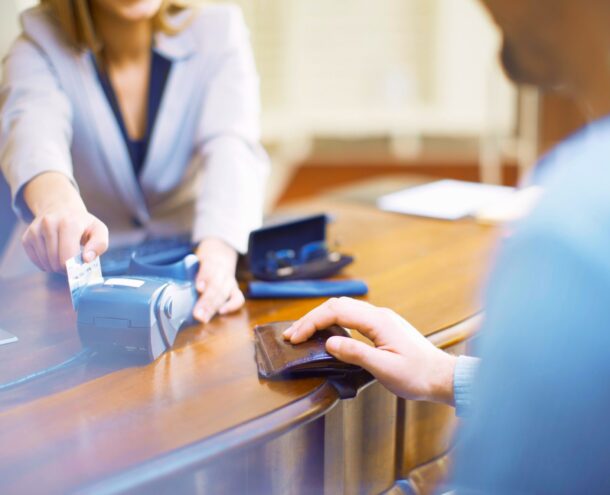Improving the Bank Experience, Branch by Branch

Even though many transactions can now be made virtually, the physical experience of the branch is still a critical element to banking. Given it’s such a vital component of many transitions in life (first home, new car, opening a business, etc.), sometimes consumers need to talk to a real person and get some real help. How can the physical experience help humanize the brand?
According to a 2017 Accenture study, the branch must adapt to the needs of the local consumer demographics it serves by creating specific experiences for each demographic. These types of consumer experiences are now table stakes for banking or any other type of service-oriented retail business. This means that a core brand experience delivered in a physical footprint must also be able to adapt. Adding to the challenge is the fact that physical experiences also have to adapt to many other external forces such as local building codes, city ordinances, landlord restrictions and more.
So how do you make your branches deliver a core brand experience?
Begin with environmental branding
Careful planning and design are the answer. Brand design does not end at the logo and the business card; it picks up at every access point for the customer. If you have a bricks-and-mortar presence, it’s a critical part of both your brand and the resulting brand experience.
As seasoned providers of environmental branding, we combine consumer insights with talented environmental designers, architects, industrial designers, interior designers and graphic designers to map out a unique position for every brand we work on. It all begins with a customer journey map and a careful look at critical touchpoints. From there it moves to design and consumer testing before prototyping and deployment.
Design with a purpose
So what are some things we can be thinking about to help us stand out? Starting with the first concepts of ease-of-use and a welcoming experience, focus on the external branch image—what’s seen from the street or the sidewalk. While your local city ordinance or landlord will probably have significant restrictions in place, there are many opportunities to stand out by using creative design and code-busters (branded elements that can’t be excluded by restrictive municipal codes):
- Signage with unique shape and color recognition
- Painted fascia bands with brand colors or branded patterns
- Illuminated soffits with branded lighting and digital images
- Fascia signs or merchandising disguised behind storefronts
- Entrance portals painted in brand colors
- Light pole, architectural banners and flags
- Colored building lighting
- Branded architectural features
- Window graphics and clings
- Internal illuminated walls, color and features
- Digital projections
- Branded street furniture and bike racks
Know the details
Understanding fabrication and construction techniques can make all the difference in the world in terms of visibility. For example, the visual impact of a fully back-lit sign or fascia band in comparison to the impact of an opaque background with routed out and pushed-thru graphics make a dramatically different brand impact. Common strip mall sign features such as channel letters can be successful or not based on the right specification for LED colors and temperatures. And in banking in particular, the street presence of your ATM can add a whole new level of branding often overlooked by sign codes. Drive-up buildings, canopies, windscreens, kiosks and TTW enclosures all offer opportunities for enhanced branding and improved user experience.
How to control it
Even with a quiver full of great environmental design and branding assets, it can all fall apart when it comes to execution. The best way to assure success is to define the design before signing the lease. Check the codes, pre-design the major external brand components and develop an overall branding package that becomes an exhibit to the lease—then there’s no fighting about it (and frustrated disappointment) later. Bake the environmental branding into your real estate procurement process from the start!
Making it easy and convenient for our customers find us, and standing out amongst the visual clutter around us, is an important first step in building consumer trust and brand preference. Planning, taking advantage of design opportunities beyond the norms, and rigid execution practices lead to success!



